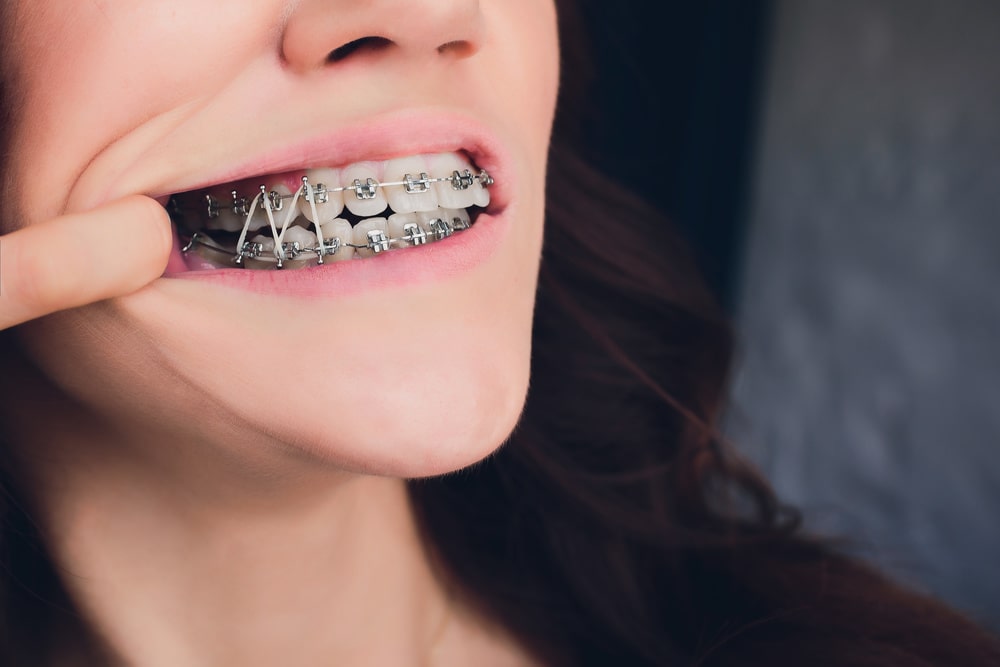
Why Do My Braces Have Rubber Bands on Them?
Now that you have a set of braces, you may be wondering what all of the different parts do to help you get the smile you’ve always wanted. Is there a purpose for every single attachment on your teeth? There sure is!
Many patients don’t understand the reason behind certain pieces of the treatment plan, such as rubber bands. Are you asking yourself, “Why do my braces have rubber bands on them?” There are a couple of reasons why your treatment plan may include them.
To Connect the Wires to the Brackets
Your braces are made up of brackets, which are attached to your teeth, and wires that connect them all together. Many patients often refer to the pieces that attach the wires to the brackets as rubber bands, but these are technically called ligatures. These often colorful pieces of the puzzle have a big job to do. They help apply the force to guide your teeth to the correct positions. This force will vary, depending on how much your teeth will need to move.
These ligatures will need to be adjusted at every appointment with your orthodontist because over time, they tend to lose their strength, resulting in less movement of the teeth.
To Help Correct Bite Issues
There is another type of rubber band that may be used with your braces in addition to the elastic bands that wrap around each bracket. This type of rubber band may be recommended for certain patients to help correct the following:
- Bite alignment
- Overbites
- Underbites
- Spacing issues
The main job of this type of rubber band is to help align the jaw properly. The bands are attached to the top and bottom teeth in a manner that will correct each patient’s individual issue. For example, rubber bands may be connected to the top teeth in the front of the mouth and back bottom teeth to help pull the bottom jaw forward and correct an overbite. The opposite configuration would be used to pull the bottom jaw backward to correct an underbite.
These rubber bands must be worn all day, with the only exception being brushing, flossing, and changing out the bands. Rubber bands will need to be replaced often to avoid bacteria build-up in the mouth and to maintain the tension needed to correct jaw alignment. Orthodontists recommend changing rubber bands out about three to four times each day, so ideally, the bands should be changed out each morning and after every meal.
Braces rubber bands colors
The rubber bands on your braces are a necessary part of your orthodontic treatment, however; they can also be an avenue for expressing yourself! You can mix and match colors for your rubber bands to craft a truly unique smile. Once you learn how to properly put in your rubber bands, you can change your color scheme as often as you like. Depending on where your elastics are needed and their function, they may only come in clear options.
Braces rubber band tool
There are tools that make putting rubber bands back in and adjusting them a breeze. There are a variety of elastic adjustment tools you can use based on your needs. Some tools come with a new pack of rubber bands that can be disposable like the elastics, or you can utilize a reusable ligature adjustment tool.
It is important to follow your orthodontist’s directions and treatment plan as far as how and where your elastics should be placed. Using a tool to help adjust your rubber bands helps to keep every part of your braces working in alignment with your treatment plan.
Rubber Band Braces Sizes
Rubber bands come in different sizes as well. The size of the band may depend on the use, the location, or how severe the correction is that needs to occur. Your orthodontist selects an appropriate size based on the force necessary for correction.
The different sizes include 1/8 inch, 3/16 inch, 1/4 inch, 5/16 inch, and 3/8 inch options. The ¼-inch size bands are probably the most common and are often colorful. Some bands come in colorful varieties and some only come in clear possibilities. What you end up with might depend on the band that is needed for your correction, but it might also just depend on what your orthodontist keeps at their office.
Do Rubber Bands on Braces Hurt?
Elastics can be placed in multiple different ways depending on what they are being used for. For example, some elastics may be placed in a certain position just to adjust a single tooth or small area. With rubber bands, you may notice a little bit of tightness around the elastic area. This may be especially true when you have your rubber bands adjusted at your orthodontist visit. However, this slight tightness just means the elastics are doing the jobs that they are meant to do. Rubber bands aren’t meant to hurt or be uncomfortable enough to cause pain or distraction.
The Importance of Rubber Bands
For those with bite alignment issues, wearing rubber bands properly will help you get the most out of your treatment. Failure to wear them correctly often results in a longer duration of treatment. For those with and without rubber bands, the elastic ligatures are essential to your treatment plan as well. This is where the force is being applied to help you get a beautiful smile at the end of your treatment.
So, if you’re wondering why rubber bands are such a crucial part of treatment, remember the function of these different types of bands and how they impact your results. And don’t forget, your orthodontist wants you to succeed more than anyone, so listen to their instructions closely. You’ll be on your way to flashing that stunning smile in no time.
At Milnor Orthodontics, our experts are here to help you achieve a priceless smile. Call our office at (970) 484-3214 or visit milnororthodontics.com to learn more. We're located at 1103 S. Shields St. in Fort Collins, Colorado.







